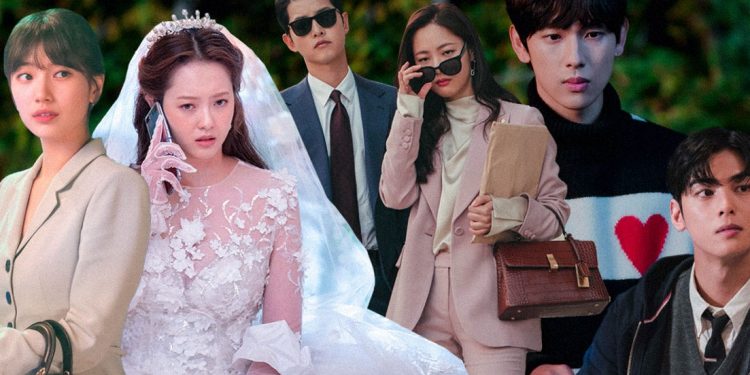Korean dramas, widely referred to as K-dramas, can be self-prescribed remedies for all ailments, and, thankfully for us, they are now more accessible than ever. Previously reserved to Korean TV stations like JTBC and tvN, now K-dramas are readily available to international fans both as simulcasts on Netflix and via multiple platforms like Rakuten Viki and Kocowa. Whether you are into a full-on rom-com or prefer a more action-packed thriller, there’s a K-drama out there for you.
If you love K-dramas, staying up at the wee hours of the night continuously pressing play on some of your all-time favorites or watching a simulcast in the middle of the day are probably common scenarios – but we, K-drama lovers, don’t hate it. It’s a lifestyle. On average, K-dramas feature 16 sweet episodes packed more often than not with clichéd piggyback rides, obscure break-ups, time jumps, and the notable inclusion of luxury products. K-dramas can feel like warm hugs, but it’s undeniable, and also understandable, that they’re also “lucrative marketing channels,” as a Business of Fashion report from earlier this year put it. We’ve witnessed products selling out by mere association with an idol on multiple occasions (notoriously BTS’s Jungkook) but do K-dramas harness the same power? Apparently so. But, while they might be good for business, do these luxury products always make sense in the narrative?
Some of the luxury products featured on K-dramas – and there are a lot, especially when it comes to fashion – might escape the non-trained eye. However, any fashion aficionado will almost immediately recognize them. (And, actually, even people who are admittedly not that into fashion will at least be able to identify that something looks high-end.) Roger Vivier’s brand manager for South Korea, Stephanie Kim, told BoF that some luxury brands even choose “the kind of character their products are spotted on,” though the inclusion of luxury products in K-dramas isn’t always synonymous with product placements.
The most obvious signal to viewers when it comes to product placements, at least on Netflix, comes via the words “this program contains product placements” when you press play or at the end of the episode. These are usually not high-fashion placements but rather commodity products such as ramen, sandwich shops, instant coffee, and smartphones, with the latter arguably toeing the line. If you are watching a program that is airing on one of the popular Korean networks (i.e. KBS, SBS, JBTC, tvN), you learn to spot the luxury products because the brand/logos are usually blurred out due to South Korea’s stricter broadcasting regulations. Put simply, per Article 73 of South Korea’s Broadcasting Act, these broadcasting stations censor any brand names/logos who aren’t officially associated with their show and there are very specific rules surrounding how an external producer can agree with the broadcaster to add these placements.
As an avid viewer, I invest a lot of time (probably too much) and emotion (again, too much) into each character as their stories unfold. So, every often, during that scene when I see the character wearing a luxury brand that doesn’t fit their storyline, it interferes with the overall relatability. But that doesn’t make them any less fun. In fact, spotting luxury products can be a game on its own so why not play a round of “does the inclusion of these luxury products make sense to the narrative?” in the six recent(ish) K-dramas? Let’s start! (But first, beware of mild spoilers ahead!)
Instead of the popular rags-to-riches clichés, Netflix’s Do Do Sol Sol La La Sol flips the script and makes it riches-to-rags for the main character Gu Rara (Go Ara). And, actually, for the other main character, Sunwoo Jun (Lee Jaewook), too. Overall, this series is a great example where it’s plausible that the once-opulent Gu Rara is repeatedly sporting the very trendy Bottega Veneta cassette bag.
Source by www.teenvogue.com













































